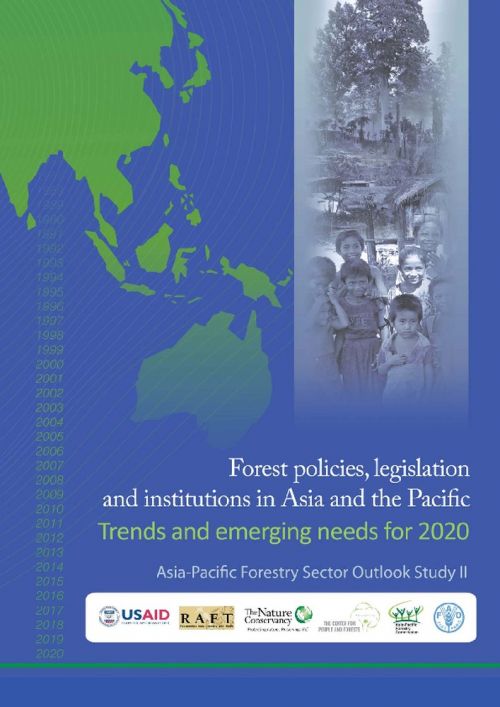APA 6th ed. Forestry Policies, Legislation, and Institutions in Asia and the Pacific. (2010, August 1). Retrieved from https://voices4mekongforests.org/publications/0000178
MLA 8th ed. Forestry Policies, Legislation, and Institutions in Asia and the Pacific. RECOFTC, 1 August 2010, https://voices4mekongforests.org/publications/0000178.
Chicago 17th ed. RECOFTC. 2010. "Forestry Policies, Legislation, and Institutions in Asia and the Pacific." Published August 1, 2010. https://voices4mekongforests.org/publications/0000178.
Forestry Policies, Legislation, and Institutions in Asia and the Pacific

Trends and Emerging Needs for 2020, Asia-Pacific Forestry Sector Outlook Study II
Tremendous social and economic changes are taking place in the Asia-Pacific region, and hopes are growing that a long awaited reconciliation of tensions between environment and development is a possibility. Rapid economic growth and heightening demands for materials, commodities and land have resulted in the depletion of forest resources in many countries around the region. Continuing deforestation and forest degradation, together with environmental shocks and the threat of climate change, have sensitized politicians and populations to the need to maintain the natural environment. In particular, natural disasters including floods, droughts and landslides have resulted in reversals in forest-related policy and forest cover in several Asia-Pacific countries. Realization of the huge availability of financial resources to cope with other threats to global society has also questioned the low prioritization of the natural environment. Increasing consensus over the threat posed by climate change and growing commitment to related international initiatives are hoped by many to bring new life to forestry and to help broaden implementation of the much discussed concept of "sustainable forest management."
In many countries significant challenges remain however, and great efforts will be needed to confront the deeply entrenched social causes of deforestation and forest degradation. Policies supporting sustainable forest management have in some cases remained essentially dormant for years and sometimes decades with little progress evident at the field level. With forest cover increasing in some countries around the region and pressure growing to conserve remaining forest resources, wider transitions to sustainable forest management may, however, be seen in the coming years. Progress depends critically on the capabilities of forestry institutions in seizing current opportunities as a means of promoting long-term goals. Building responsiveness into institutional mechanisms and adapting to change constitutes one of the most important steps in creating a robust sector in a fast-evolving world.

